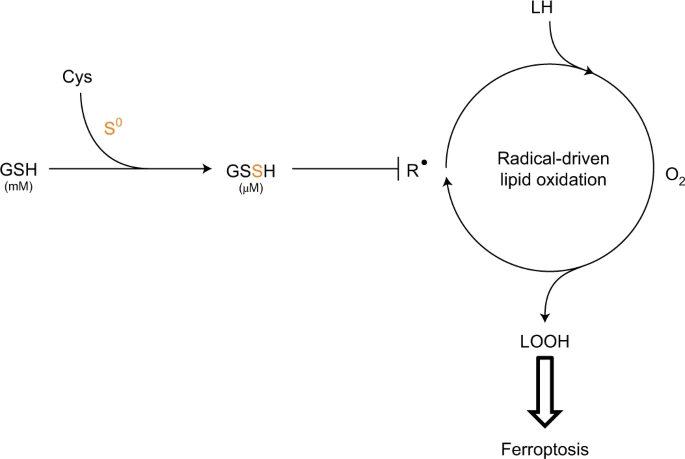© Copyright – SPP 2306 | Privacy Policy | Webdesign: Science Crunchers
Hydropersulfides inhibit lipid peroxidation and ferroptosis by scavenging radicals
Our most recent collaborative study with several partners from the SPP 2306
(Dick TP, Friedmann Angeli JP, Schulze A):
Figure from Barayeu, U. et al., 2023
PMID: 36109647
Ferroptosis is a type of cell death caused by radical-driven lipid peroxidation, leading to membrane damage and rupture. Here we show that enzymatically produced sulfane sulfur (S0) species, specifically hydropersulfides, scavenge endogenously generated free radicals and, thereby, suppress lipid peroxidation and ferroptosis. By providing sulfur for S0 biosynthesis, cysteine can support ferroptosis resistance independently of the canonical GPX4 pathway. Our results further suggest that hydropersulfides terminate radical chain reactions through the formation and self-recombination of perthiyl radicals. The autocatalytic regeneration of hydropersulfides may explain why low micromolar concentrations of persulfides suffice to produce potent cytoprotective effects on a background of millimolar concentrations of glutathione. We propose that increased S0 biosynthesis is an adaptive cellular response to radical-driven lipid peroxidation, potentially representing a primordial radical protection system.
Original publication:
Hydropersulfides inhibit lipid peroxidation and ferroptosis by scavenging radicals.
Barayeu U, Schilling D, Eid M, Xavier da Silva TN, Schlicker L, Mitreska N, Zapp C, Gräter F, Miller AK, Kappl R, Schulze A, Friedmann Angeli JP, Dick TP. Nat Chem Biol. 2023 Jan;19(1):28-37. doi: 10.1038/s41589-022-01145-w. Epub 2022 Sep 15. PMID: 36109647 Free PMC article.
Please follow this link for a list of all SPP 2306 publications.



